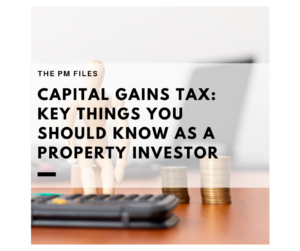
Capital Gains Tax: Key things you should know as a property investor
Just like death and taxes are guaranteed for all humans, capital gains tax (CGT) is typically a guaranteed levy you’ll pay when you sell an investment property. There’s lots to remember about CGT, and making sure you do things the right way starts with the advice you get before and during the purchase and sale process. Keep reading below for the key things you should know about CGT on investment properties.
What is Capital Gains Tax?
The levy you pay on the sale of an asset is CGT. The capital gain will be the difference between what you paid for the asset and what it sells for, less any fees incurred for the purchase. A loss can also occur if you sell the asset for less than what you paid.
How is CGT calculated?
CGT gets added to your income tax for the year you sold the property. If you bought and sold a property within 12 months, the net capital gain will be added to your taxable income for that financial year. As a result, this increases the income tax you’ll pay that year. If you held the property for more than 12 months, you can use the CGT discount or indexation method to calculate the CGT you owe.
CGT discount method
If you owned your property for more than 12 months and you’re an Australian resident, you can use the CGT discount method. This allows for a 50% discount on your capital gain. So, if you sold a property and made a capital gain of $150,000, you would only need to add $75,000 to your taxable income.
Indexation method
The indexation method applies to properties purchased before 21 September 1999. The method applies a multiplier to the initial cost of buying the property. This is to account for inflation and increases your initial purchase price, reducing your capital gain. The multiplier is calculated by dividing the consumer price index (CPI) at the time you sold the property by the CPI at the time the property was purchased. The figure is rounded to three decimal places.
Can you avoid paying CGT?
You likely won’t be able to avoid paying CGT altogether on an investment property, but some exemptions and discounts can apply. You can invest using your superannuation. There is only a one-third CGT discount for properties bought and held in an SMSF, but the tax rate is 15%, taking your maximum CGT rate to 10%.
You can also time the capital gain or loss to occur in a year when your income may be lower. To do this, you could delay selling the property until a future financial year.
CGT is an inevitable part of selling an investment property. Taking advantage of any applicable exemptions and timing the sale of your property to reduce your taxable income can reduce the amount of CGT payable. The outcome will always depend on your unique situation. Seek tailored advice when it comes time to buying and selling property to make sure you structure everything suitably.
Remember, this article is general in nature and is not financial or legal advice. Please consult your professional financial and legal advisors before making any decisions for yourself.
Subscribe to our blog 'The PM Files'
Get our latest blog delivered straight to your inbox - essential reading for all investment property owners


